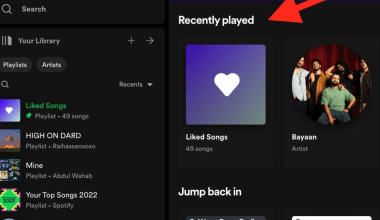Every sound you hear on your devices—whether it’s your favorite song, a podcast, or an audiobook—exists in an audio file format. Simply put, an audio file format is the type of file that stores sound on your computer, phone, or any other gadget. If you’ve ever seen files ending with .mp3, .wav, or .flac, you’re already familiar with some of them. But did you know there are many different kinds of audio formats, each with its unique features?
In this guide, we’ll dive deep into the list of audio file formats and explain them in the simplest way possible. Whether you’re a music lover, a beginner in audio editing, or just curious, this guide is for you.
What Are Audio File Formats?
Think of an audio file format as a container that holds sound. Just like water can be stored in bottles, jars, or cans, sound can be stored in different formats. Each format has its pros and cons. Some keep the sound as pure as possible, while others save space by reducing quality a little.
There are two main types of audio file formats:
- Lossless Formats: These keep all the sound data intact, like saving a perfect copy of the original sound.
- Lossy Formats: These make the file smaller by removing some sound details, which slightly lowers the quality.
Let’s explore the most common audio formats to see how they work and when to use them.
Popular Audio File Formats Explained
1. MP3 (MPEG Audio Layer III)
This is the most common audio format. It’s what you find in most songs downloaded or shared online.
- What it’s good for: Everyday listening on phones, computers, and music players.
- Why people love it: It’s small in size, so you can store lots of songs without taking up much space.
- Downside: It sacrifices some sound quality to save space. But most people won’t notice the difference.
Example: Think of a song you stream online—it’s likely in MP3 format.
2. WAV (Waveform Audio File Format)
WAV files are like a crystal-clear mirror of the original sound. No quality is lost.
- What it’s good for: Professional audio recording and editing.
- Why people love it: It offers the best sound quality.
- Downside: WAV files are huge, so they take up a lot of space.
Example: Studios use WAV files to record music because every detail matters.
3. FLAC (Free Lossless Audio Codec)
FLAC is perfect for music lovers who care about every beat and tone.
- What it’s good for: Storing high-quality music without wasting space.
- Why people love it: It compresses audio without losing quality.
- Downside: Not all devices can play FLAC files.
Example: Audiophiles (people who love perfect sound quality) often download music in FLAC.
Formats for Everyday Use
Some audio formats are great for regular folks who just want to enjoy music, podcasts, or videos without worrying about the technical stuff.
4. AAC (Advanced Audio Codec)
AAC is like an upgraded version of MP3. It’s often used in apps like YouTube, iTunes, and Spotify.
- What it’s good for: Streaming music or watching videos online.
- Why people love it: Smaller file size with better quality than MP3.
- Downside: It’s not as universally compatible as MP3.
Fun fact: The music you hear on YouTube is often in AAC format.
5. OGG (Ogg Vorbis)
This is an open-source format, which means it’s free for everyone to use.
- What it’s good for: Streaming audio in games or online platforms.
- Why people love it: It’s lightweight and offers good sound quality.
- Downside: Not all devices support OGG files.
Example: Many games use OGG files for background music and sound effects.
Special Formats for Apple and Windows
Some formats work best with specific devices or systems.
6. ALAC (Apple Lossless Audio Codec)
Designed by Apple, ALAC is perfect for people who use iPhones, iPads, or Mac computers.
- What it’s good for: Storing high-quality music on Apple devices.
- Why people love it: Combines great sound with reasonable file sizes.
- Downside: Limited to Apple devices.
7. WMA (Windows Media Audio)
WMA is Microsoft’s answer to audio formats.
- What it’s good for: Playing music on Windows computers.
- Why people love it: Works well with Windows software.
- Downside: Not widely supported outside Windows.
How to Choose the Right Audio File Format
It all depends on what you need. Ask yourself these simple questions:
- Do I need high-quality sound?
- Yes: Go for WAV, FLAC, or AIFF.
- No: MP3 or AAC will do.
- Am I running out of storage space?
- Yes: Choose MP3 or AAC.
- No: Use FLAC or WAV for better quality.
- What device am I using?
- Apple devices: ALAC or AAC.
- Windows: WMA or WAV.
The Future of Audio File Formats
Technology is always evolving, and audio file formats are no different. New formats might appear, offering better sound quality with smaller sizes. One trend to watch is immersive audio, like Dolby Atmos, which makes you feel like you’re surrounded by sound.
Simple Tips for Managing Audio Files
- Organize Your Library: Keep your music files labeled with proper names like “Artist – Song Title.”
- Use the Right Player: Download apps that support multiple formats, like VLC or Foobar2000.
- Back Up Your Files: Save your favorite songs on an external hard drive or cloud storage.
Final Thoughts
Understanding this list of audio file formats doesn’t have to be complicated. Think of it like picking the right tool for the job. Whether you’re a professional audio engineer, a budding musician, or just someone who loves listening to tunes, knowing the basics helps you make better choices.
Next time you download, share, or save a song, you’ll know exactly what format to pick. Happy listening! 🎶
Related Articles:
For further reading, explore these related articles:
- How to Become a Successful Music Artist in India in 2024?
- Promo Cards on Spotify: A Game Changer for Artists
For additional resources on music marketing and distribution, visit Deliver My Tune.






